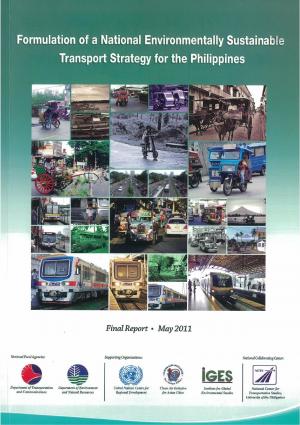Make Best Use Of Direct Exposure with Transit Advertising Philippines
Make Best Use Of Direct Exposure with Transit Advertising Philippines
Blog Article
How Transit Advertising And Marketing Can Change Public Transport Spaces Into Dynamic Advertising Platforms
Transit advertising holds significant potential to redefine public transport rooms right into dynamic advertising platforms that involve and notify. By using ingenious styles such as electronic display screens and interactive stands, brand names can not only reach a diverse target market yet also boost the overall traveler experience. This strategy creates an unique chance for brands to connect with customers in a setting that is frequently overlooked. As we discover the complex benefits and progressing techniques of transit advertising, it elevates the concern of how this transformation can redefine our interactions with both brand names and the metropolitan atmosphere.
Advantages of Transportation Advertising

In addition, transportation marketing is highly cost-effective compared to conventional media. It permits advertisers to achieve high perceptions at reduced costs, maximizing return on financial investment. The restricted audience of travelers offers an opportunity for brand names to communicate their messages to individuals that are commonly receptive throughout their travel times.
Furthermore, the vibrant nature of transportation advertising enables campaigns to be upgraded regularly, ensuring that messaging remains timely and pertinent. This versatility can be critical in reacting to market fads or advertising events, keeping the brand name top-of-mind for customers. Last but not least, the pervasive presence of transit marketing adds to brand name recall; repeated exposure within acquainted travel contexts strengthens brand awareness and fosters consumer commitment, ultimately boosting and driving sales brand online reputation.
Sorts Of Transportation Advertising And Marketing
Public transport systems provide various layouts for marketing, each catering to various marketing strategies and target market engagement methods. One popular type is external bus and train covers, which cover the entire car and produce a mobile billboard result, allowing for high exposure in urban environments. These covers can record interest as they go across active streets, reaching a varied audience.
One more preferred layout is indoor advertising and marketing, which includes posters, electronic screens, and ads on transportation seats. These placements involve guests during their journey, reinforcing brand name messaging in a constrained space. Digital shows, in particular, offer the advantage of vibrant material, enabling advertisers to update messages in real-time.
Terminal advertising and marketing is also considerable, featuring posters, banners, and interactive stands within transportation stations. These advertisements take advantage of foot web traffic and can target details demographics based upon place.
Finally, advertising collaborations with transit authorities can result in special campaigns, such as themed transportation experiences or events, enhancing the total interaction with travelers. Each kind of transportation marketing uses unique benefits, enabling brands to tailor their technique to properly reach their target audience within the public transportation community.
Involving Travelers Properly
Travelers are significantly inundated with advertising and marketing messages throughout their daily travels, making it necessary for brands to engage them in innovative ways. To capture interest in this congested space, marketers must prioritize imagination and significance. Utilizing attractive visuals and concise messaging can significantly improve the probability of interaction.
Interactive elements, such as QR codes or augmented truth attributes, can likewise transform static advertisements right into immersive experiences, promoting a deeper connection with the target market. Brands must concentrate on addressing commuters' demands and rate of interests, tailoring messages to reverberate with their way of life, whether with promos for regional companies or services made to boost their travelling experience.
Moreover, timing plays a critical function; strategically placing ads throughout optimal commuting hours can optimize visibility and impact. Involving travelers effectively likewise entails leveraging social networks assimilation, enabling guests to share their experiences or promos directly from transportation platforms, thereby enhancing brand name reach.
Basically, reliable interaction depends upon understanding the commuter journey and developing engaging, interactive, and pertinent marketing experiences that not only record focus however also drive activity and commitment. By doing so, brands can transform public transport into a vibrant advertising and marketing system that reverberates with its target market.

Measuring Advertising And Marketing Effect
Just how can brand names precisely examine the performance of their advertising campaigns in transportation atmospheres? Measuring the effect of transportation advertising and marketing needs a complex method that combines qualitative and measurable metrics. One widespread technique is tracking involvement via mobile analytics, where brands can examine foot great site web traffic patterns and application communications previously, throughout, and after projects.
Studies can supply beneficial insights into brand name recall and customer belief, permitting brands to evaluate how well their messages reverberate with travelers. Additionally, keeping an eye on social networks interaction associated to certain projects can disclose shifts in public assumption and brand conversation.

Additionally, working together with transportation firms can enhance dimension accuracy, as they commonly have thorough market information on ridership trends. By incorporating these approaches, brand names can develop a comprehensive understanding of their advertising and marketing effectiveness, making certain that their campaigns not just reach but likewise influence their target audiences successfully.
Future Patterns in Transit Advertising And Marketing
A significant shift is anticipated en route advertising and marketing as technological developments and changing customer habits reshape the landscape. Transit Advertising Philippines. The integration of digital screens and interactive media is anticipated to improve engagement, enabling brand names to supply vibrant web content that resonates with varied target markets. As public transport systems welcome wise innovation, advertisers will leverage real-time data analytics to customize messages based on traveler demographics and actions
Furthermore, augmented truth (AR) is poised to revolutionize the means travelers engage with ads. By offering immersive experiences, AR can change a mundane journey into an engaging story that catches focus and cultivates brand name commitment. Visit Website This development will likely urge marketers to develop more experiential projects that drive consumer communication.
Sustainability is another important fad influencing transit advertising and marketing. As environmental awareness grows, brand names will increasingly seek to align with environmentally friendly practices, making use of sustainable products and promoting green efforts within their campaigns.
Conclusion
In conclusion, transportation advertising and marketing provides considerable benefits by improving brand name exposure and engaging a restricted audience. As fads develop, the potential for innovative interactions between commuters and brand names is poised to grow, making sure that transit advertising continues to be an important element of modern-day advertising methods.
Transportation advertising holds significant possibility to redefine public transportation areas into vivid marketing systems that engage and notify. The pervasive presence of transit advertising adds to brand recall; duplicated direct exposure within familiar traveling contexts strengthens brand understanding and cultivates consumer commitment, inevitably driving sales and enhancing brand online reputation.
How can brand names accurately evaluate useful source the effectiveness of their advertising and marketing campaigns in transit settings?In verdict, transportation marketing offers significant benefits by improving brand name visibility and involving a restricted audience. Transit Advertising Philippines. As patterns develop, the possibility for cutting-edge communications between commuters and brands is poised to expand, ensuring that transit advertising continues to be a vital component of modern marketing approaches
Report this page